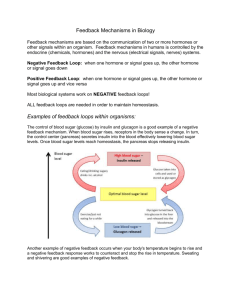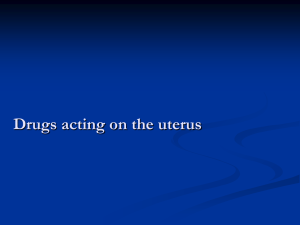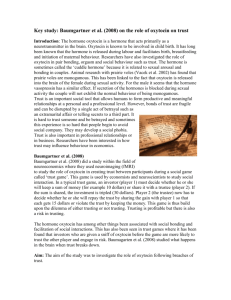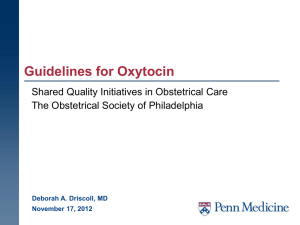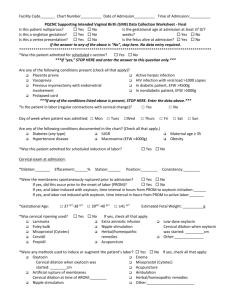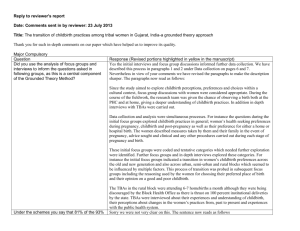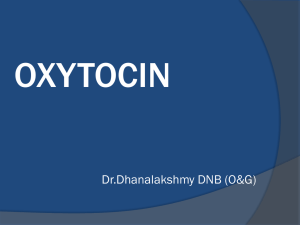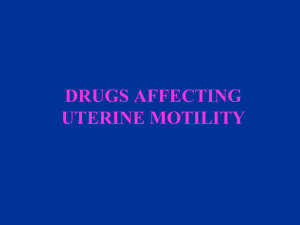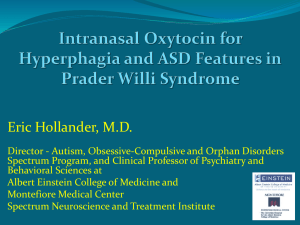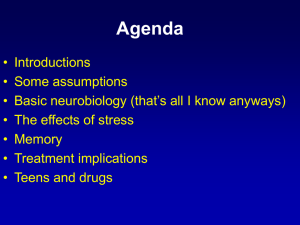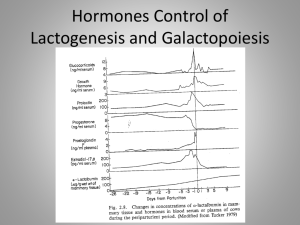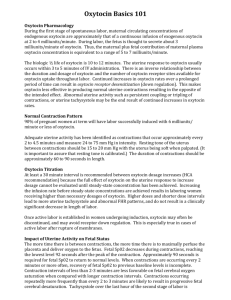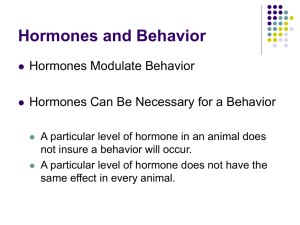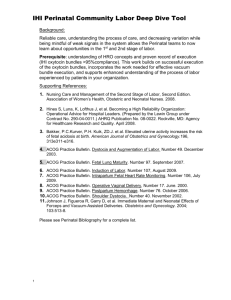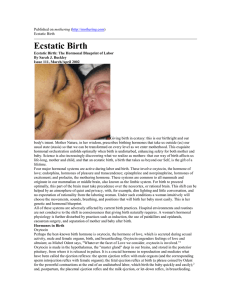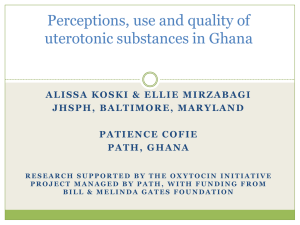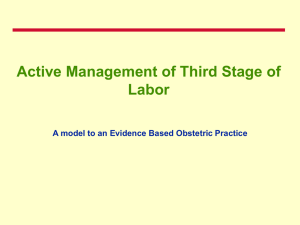Oxytocin
advertisement
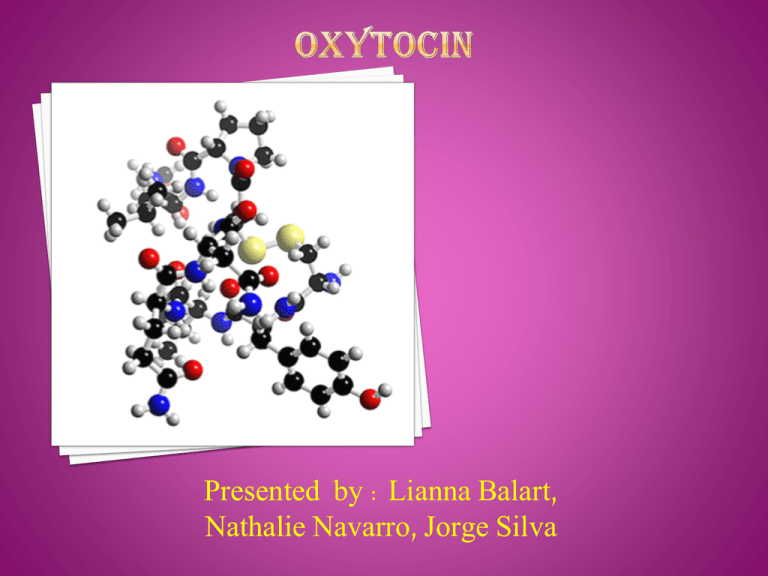
Presented by : Lianna Balart, Nathalie Navarro, Jorge Silva What is oxytocin? Oxytocin is a powerful hormone. Oxytocin’s level increases when, we hug, or kiss someone. It plays roles especially in sexual reproduction, the most common situations are before and after childbirth. It is released in large amounts after distension of the cervix and uterus during labor, facilitating birth, maternal bonding, and, after stimulation of the nipples, breastfeeding. This hormone affects orgasm, social recognition, pair bonding, anxiety, and breastfeeding. That’s why sometimes it is called the “love hormone”. Oxytocin is produced in the hypothalamus. The myoepithelial cells of the breast, which surround the alveoli of the mammary gland, and the smooth muscle cells of the uterus. How is oxytocin controlled? Oxytocin is controlled by a positive feedback mechanism where release of the hormone causes an action which stimulates more of its own release. When contraction of the uterus starts, for example, oxytocin is released which stimulates more contractions and more oxytocin to be released. In this way, contractions increase in intensity and frequency. There is also a positive feedback involved in the milkejection reflex. When a baby sucks at the breast of its mother, the stimulation leads to oxytocin secretion into the blood which then causes milk to be let down into the breast. Oxytocin is also released into the brain to help stimulate further oxytocin secretion. These processes are self-limiting; production of the hormone is stopped after the baby is delivered or when the baby stops feeding. Oxytocin can also be used as an injection which benefits love making What is the normal function of oxytocin? Oxytocin is a mammalian hormone that has many functions, the most notable having to do with pregnant or lactating mammals. In this capacity, some of the hormone’s main function are preparing a female’s body for childbirth. How does the hormone contribute to homeostasis? Oxytocin as feed inhibitor: maintaining homeostasis In consummatory behavior. What are the target organs/structures of the hormone? The structure of the hormone is very similar to that of vasopressin, also a nonapeptide with a sulfur bridge, whose sequence differs from oxytocin by two amino acids. What are the causes and symptoms of hypersecretion of the hormone? What diseases result from this condition? Galactorrhea(leaking milk from breast tossue) -Pituitary adenoma -Hyperprolactinemia -Prolactinamo -Hypothyroidism -Pituatary tumor This is what the Oxytocin compound looks like and the elements it’s made out of.
